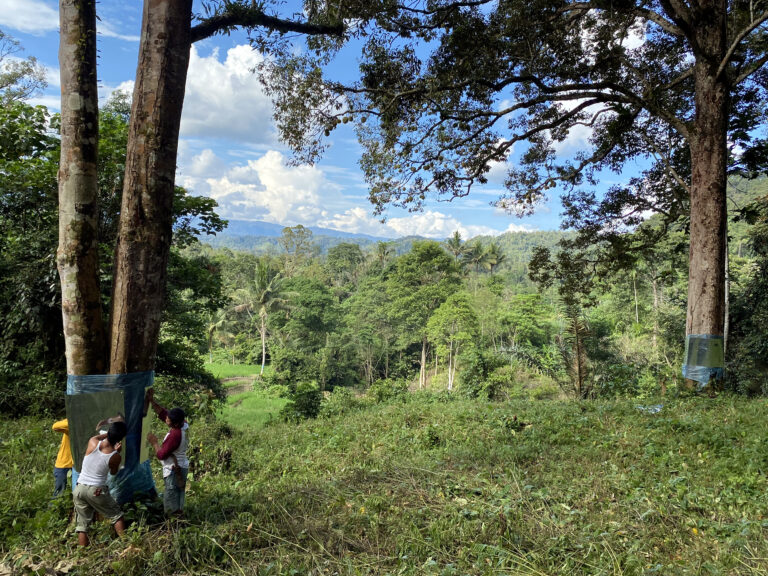Targeted training programmes for village communities living on the edge of the rainforest are intended to help in these situations and aim to reduce human-animal conflicts in the long term. In the North Tapanuli district of Sumatra, our local partner organization OIC (Orangutan Information Centre) and the state Natural Resources Conservation Agency BKSDA, organize such training courses. The course participants learn how they should behave when an orangutan enters their garden. It is not without danger to confront wild animals, and they must be pushed back from the villages deep into the forest where they are safe.
Awareness and prevention
The orangutans prefer to steal ripe fruit from the gardens during the harvest season. Some farmers get angry and demand compensation for their losses. However, awareness of the need to protect wild animals is slowly growing.

Especially after an incident has occurred, village communities are very interested in learning how they can help themselves. In training courses, they learn why protected wild animals should neither be hunted nor kept as pets. Preventive measures are developed together to ensure they will be accepted and implemented by the villagers. For example, special food trees for orangutans can be planted between the gardens and the edge of the forest to prevent them from entering the gardens in the first place. Another possibility is to cover the trunks of fruit-bearing trees with metal sheets so that the orangutans can no longer climb up the trees.

Behaviour rules
- Keep calm!
- Do not injure the animal under any circumstances
- Move slowly
- Keep a safe distance: at least 10 metres away
- Shoo the orangutan back into the forest together
- inform the authorities
If the orangutan does not retreat into the forest on its own, an explosive noise will help to drive it away. In the training courses, the participants learn how to use self-made tools made from PVC pipes that will scare the animals. To assess the situation properly and plan further steps, the local authorities or the OIC team of experts must be notified whenever there is a conflict with orangutans. If an animal has obvious health problems, such as malnutrition, or if it is injured, they will also organise transport to the quarantine and rehabilitation centre.





